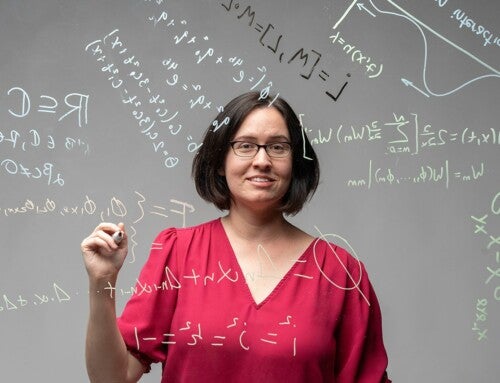When Stephen Della Lana, senior instructor of German in the College of Charleston’s Department of German and Slavic Studies, first visited Germany in 1982 he was 16 years old. The Berlin Wall still stood, separating the thriving West, which had become a haven for creative and academic types in the years since World War II, from the somber and economically depressed East.

Della Lana’s friends at the wall during his first visit to Germany.
He describes bike rides along the border, his high school friends climbing up the holey Wall and peeking over it into the East. He grew to better understand the relationship between the two Germanys when his undergraduate studies brought him back to Berlin.
RELATED: Check Out the Department of German and Slavic Studies
The Fall
Throughout the 1980s, Della Lana returned to Germany frequently, visiting friends he’d made on that first trip and identifying with East German strife in ways most Americans never would. He had grown close with a family living in East Berlin, and was shocked to find, on a trip in the mid 80’s, that the family’s son, Axel Wolter, had become a political prisoner after he and friends protested at the Wall one evening.
Della Lana exchanged letters with Wolter’s sister Kerstin and their mother Marita Jackisch, staying apprised about his wellbeing and the escalating frustration in East Germany. Hearing about the deteriorating conditions there only made him more desperate to visit his friends.
“In the spring of 1989 I got a scholarship to live in Germany for a year,” Della Lana said. “In October, the Secretary of State announced that East Germans would be able to visit West Germany, and the floodgates opened. That, of course, led to November 9, 1989, when the Wall fell.”
Della Lana can’t quite describe the joy that echoed throughout Germany, even to Nuremberg where he was living at the time, four hours from Berlin. “I remember seeing all the East German cars in the countryside, people honking their horns and waving at strangers.”
Reuniting Germany
Months later in January 1990, when East Germany existed as a strange version of its former self, without the secret police or the border guards, Della Lana attended a protest at what remained of the Wall. East and West Germany would not be reunified for several more months and the protesters hoped to expedite the process.
“We wandered into the secret police, or Staatssicherheit, headquarters, and it was empty because they were gone. They didn’t exist anymore,” Della Lana explained. “So this group of protesters walked in and we found a room full of refrigerators filled with these delicacies that East Germans hadn’t seen in decades, like meat and strawberries.

The Trabant, a car made in East Germany, leaving the Palace of the Republic in 1985 – photo by Della Lana.
“I’ll never forget as long as I live,” Della Lana continued, “This woman holding a container of strawberries and crying, saying she hadn’t seen strawberries in 45 years because everyone got the same food in East Germany and you had to wait in line for your portions. It was a socialist nation.”
As months passed, however, the mechanics of reintegrating East and West Germany proved complicated, and tensions rose between peoples of the two countries. “West Germans thought the East Germans were lazy because they lived under socialism and weren’t motivated to work hard, while East Germans resented westerners who didn’t understand the challenges they’d faced since World War II,” Della Lana explained.
Looking Back After 25 Years
Now, 25 years after the fall of the Wall, East Germany is observed through tourist attractions like the TV Tower, built to overlook the wall as a sign for the West of the East’s prosperity, the DDR Museum, a small museum dedicated to the German Democratic Republic (East Germany) and Ostkost, a shop that stocks the foods of the former nation.
But Della Lana contends these sites don’t communicate how it was before the fall. “People can’t imagine how isolated it was to be there,” he said. “Media was completely censored, the border crossing was terrifying and people were always afraid of being spied on. It was a place that was truly stuck in the past – people heated their houses with coal! In the 80’s! That’s something you can’t get a sense of today.”
Despite some experiences getting lost in translation, though, Della Lana sees the world has learned some important lessons from the events following the War in Germany.
“People learned that freedom can’t be suppressed,” he said. “It can be stifled for a time, but not forever. People’s sense of freedom will always prevail.”
Della Lana integrates his experiences in Germany, which continue each year through his work at the College, into his courses. “I have photos of Germany before the Wall fell that I show every year, and news articles from that time in Germany. It enhances the history and the class for students.”
He and professors from other departments and schools at the College, along with a professor from the University of South Carolina, will hold an interdisciplinary event called “The Night the Berlin Wall Fell and Germany Rocked!” on November 13, 2014 at 7 p.m. in the School of Mathematics and Sciences Building (202 Calhoun St.) room 129.
RELATED: Learn more about this event
Della Lana is teaching two sections of Intermediate German and German for International Business during the fall 2014 semester. He will return to Germany with students studying abroad in the spring 2015 semester.







